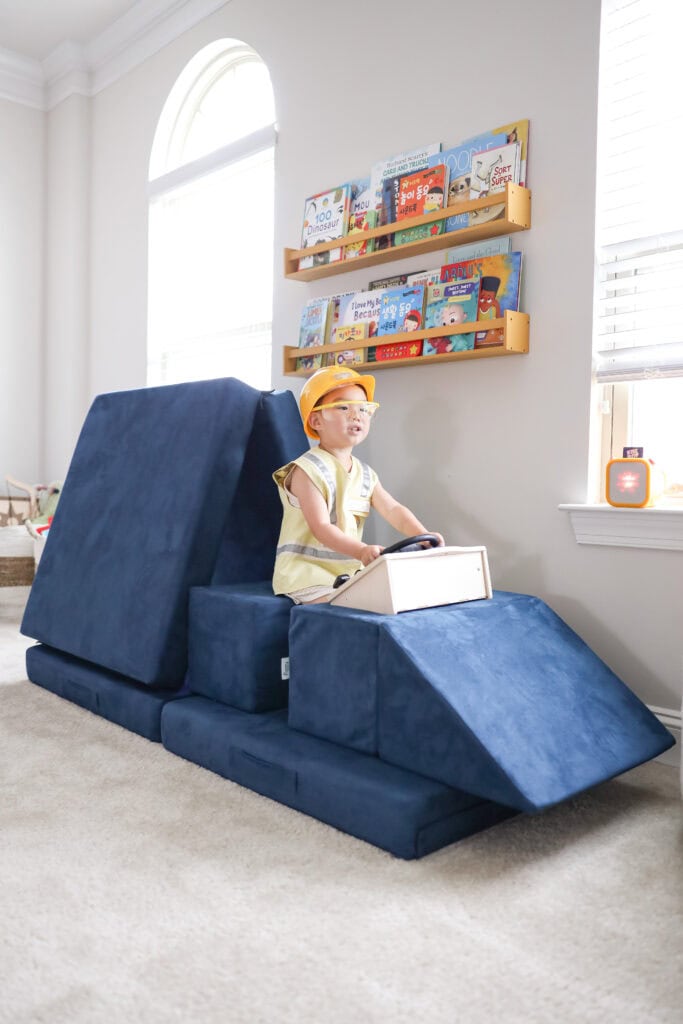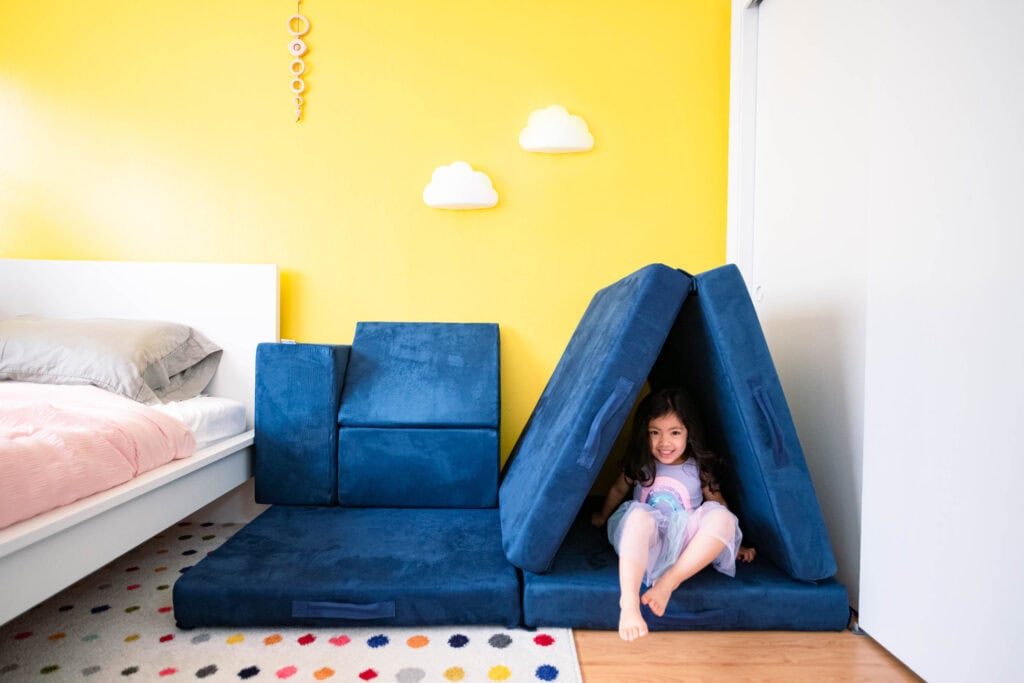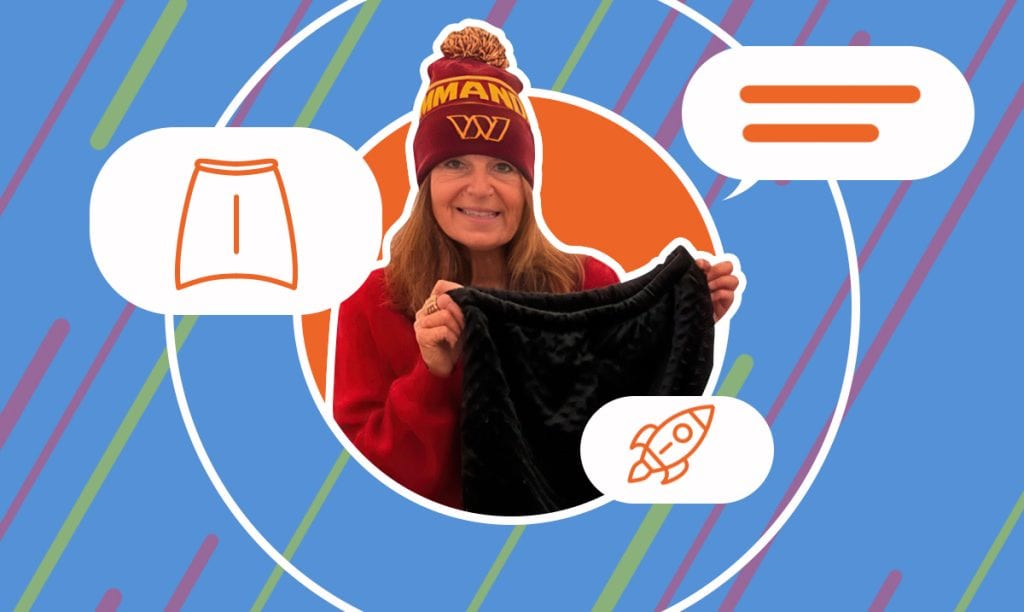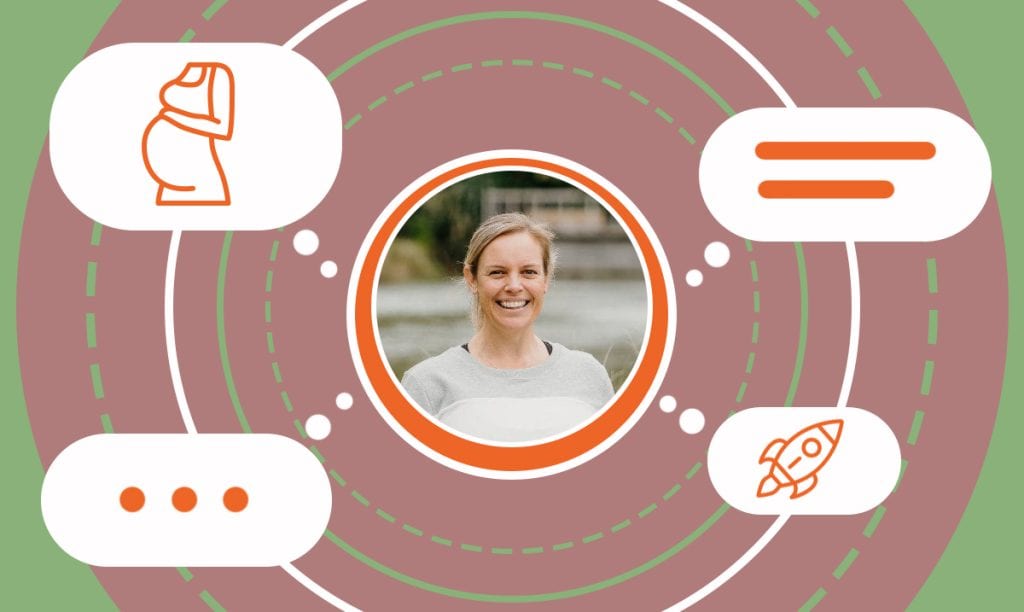If you’ve ever struggled with cold feet in bed or while lounging, CozyFeet might be the perfect solution. Founded during the pandemic by CorinneO& ...
How Figgy Play Reinvented Kids’ Furniture
Written by: Esther Strauss
Esther is a business strategist with over 20 years of experience as an entrepreneur, executive, educator, and management advisor.
Published on April 16, 2024

In this interview, we sit down with Chris Roepe, the co-founder of Figgy Play, a company that has redefined playtime with its innovative and child-safe play couches. Founded alongside Rachel Neill during a time when finding engaging and safe play options for children became crucial, Figgy Play emerged as a beacon for parents seeking quality and creativity in children’s play furniture.
Readers can expect to dive into the origins of Figgy Play, learn about the challenges and triumphs of navigating the e-commerce landscape, and discover the future aspirations Chris holds for expanding the brand’s impact on families worldwide.
Figgy Play’s Market Genesis
SBS – How did you identify the need for a product like Figgy in the market, and what were the key factors that influenced its design?
Chris – Figgy was created during the pandemic and was born out of the play couch concept. As parents, my co-founder and I very quickly discovered that popular play couches at the time were not designed to withstand all-day play or big kids jumping on them. They were very flimsy, and the design of these play couches was limiting because the cushions were stuck together. We also didn’t know if the materials were safe. So, we set out to change that!
Our goal was to introduce a higher-quality option. We wanted our play couch to be safe and thoughtfully designed for children, sturdy yet soft, and able to withstand all-day play. The idea of attaching Velcro connectors on our Figgy play couch was a game changer and allowed for a better combination of builds. Last but not least, we designed all of it to be waterproof!
We listened to parents and kids, surveyed users, read countless reviews and Reddit posts, and then thoroughly tested many designs. Additionally, we had personal experience designing hypoallergenic and safe products for the masses. I knew first-hand the safety and allergy concerns that many people could encounter with textiles and also that many companies do not watch out for harmful chemicals or irritants in their manufacturing. That’s why we are committed to producing safe and non-toxic products that hold third-party certifications like GreenGuard, Oeko-Tex, and CertiPur-US foam — it’s truly what sets us apart.

Material Selection and Sustainability
SBS – Can you elaborate on your choice of materials for Figgy, especially regarding safety and sustainability?
Chris – Parents want the safest materials for their children. From day one, we knew we had to use Oeko-Tex-certified fabrics. We went above and beyond and also tested for harmful chemicals, heavy metals, formaldehyde, and other allergens. When it comes to the foam, we researched the gold standard for certifications and decided to only use CertiPUR-US-based foams. We source our foam in the US and use a foam that is proprietary to Figgy (we call it Figgy-Foam). It is one of the nicest foams you can buy, and is the same type of foam that goes into mattresses and lasts for many years.
Oeko-Tex is a great standard because it makes sure that the dyes used are very safe. Many people don’t know that this has a huge impact on the workers involved in making the fabric and also the water supply used during manufacturing. Having very safe products means that the environment doesn’t suffer and our workers are also very safe.
Our focus on quality isn’t just for the experience; it is intended to extend the life of the product. We recently started using even stronger fabrics that have been tested to withstand thousands of abrasions and can hold up to super-human strength! We do this so the product can be used for kids but also handed down to others or even taken to college someday. Our Figgy product is easily machine-washed and intended to last for years.
E-commerce Strategies for Engagement
SBS – What strategies have you employed to make your website engaging and customer-friendly for online shoppers?
Chris – Figgy is unique, but we found figgyplay.com to look like all of the dorm rooms, play sofas, or kids’ couches. We realized that we had to tell a story in the eyes of our customers so they understood why we were different. We spent a lot of time talking to customers and were blown away with what they valued. For instance, we made a very sturdy foam that we knew was nice to sit or lay on but strong enough to support fort structures… Parents told us that with our Velcro connectors, they could connect three pieces and have their children sit on top without it buckling! Our foam and Velcro were definitely strong, but we didn’t know that was one of their favorite things to do. We also found out that parents liked buying multiple of our products and making ball pits. Since our product can endlessly connect, this was another unique use that we were not initially aware of. Customer feedback has always informed our storytelling on the website.
Optimizing Customer Experience
SBS – How do you ensure a positive customer experience, from browsing your website to product delivery and after-sales service?
Chris – I used to work at a founder-based company called Lands’ End. We did what was right to help the customer. We do that at Figgy, and we take pride in it. All of our products have warranties, and we also like to help out the greater community. For example, we may get requests from schools to help teachers put Figgys in their classrooms, and we figure out how to make it economical for them.
Innovation and Practical Design at Figgy
SBS – How do you maintain innovation in your product designs while ensuring they are practical and appealing to your target market?
Chris – We focus on simplicity. One of the greatest things Apple does is design a product for which you don’t need an instruction manual. The Figgy is simple to understand, and it works effortlessly. Kids understand how to play with blocks, and the Figgy play couch is the same. You can endlessly connect the pieces together using our Velcro connectors, and kids just let their imaginations run wild. To build on the base platform of Figgy, we have added additional shapes that seamlessly work with its design. We have a half-moon shape that can be used as a rocker by itself or as a wheel when connected with another half-moon. We design our products to build on existing products, so any new items for sale will always blend and work with products our customers already have, and yes, we do have a few new fun items on the way!

Effective Marketing Techniques
SBS – What marketing strategies have been most effective for Figgy, and how do you differentiate your brand in a competitive market?
Chris – Influencer marketing is extremely effective for us. There are so many great creators on Instagram, Reddit, TikTok, and Facebook. We place products with influencers, and they, in turn, test out the products and provide content. We have had a lot of success with some really great influencers. Recently, we had a mom who is also a physical therapist demonstrate how she teaches her daughter to sit and stand using a Figgy. Not only is it adorable, but it drives amazing traffic and awareness.
We differentiate ourselves from others based on our quality, the strength of our fort builds (our foam is amazing), and the versatility of our Velcro connection system. There are so many knock-offs out there right now that are selling for $150–$200. I’m just not sure how you do that and have a quality product that is safe. I’ve seen some that are half the size of ours, and that makes sense, but otherwise, I would be a little hesitant. We focus on the amazing things you can do with our Figgy and sometimes even do silly things like building a double-decker house with a huge weight on top of it.
Feedback Influence on Product Development
SBS – How has customer feedback shaped the evolution of Figgy products?
Chris – Every time we contemplate new products, we throw our ideas out on Facebook and invite the community to comment. We ask them to make the product better, if they would play with it, what wouldn’t work, and other ideas. We always get a lot of feedback and a ton of interest. On a recent product, many moms kept requesting a circular product because kids get so much enjoyment out of rocking. We tried multiple products out and even had moms test them.
Supply Chain Management Challenges
SBS – Could you describe the challenges and solutions you’ve encountered in managing your supply chain, particularly with regard to manufacturing in the US?
Chris – The pandemic was the hardest time for managing the supply chain. Fabric, cutting, and sewing are not strong suits anymore in the US. Our labor force doesn’t have many people who know how to sew, and the quality is so much better in Asia. The problem that causes is shipping. We were shipping covers from Asia, but our containers cost more than $20K. We reacted to this by moving cut and sew to Mexico, thinking it would be easier to truck our covers across the border. That created a whole set of new issues related to tariffs and price gauging by the cross-border shipping companies.
Today, we’ve been lucky to find an amazing partner that makes all of the fabric and covers for the largest and highest-end furniture brands. Their fabric is also the best of the best. We are in good hands.
Key Lessons from Figgy’s Growth
SBS – What have been the biggest challenges in establishing and growing Figgy, and what lessons have you learned that would be valuable to other entrepreneurs?
Chris – I feel like every day you own a business, you encounter a new challenge. The surprises are the challenge. We plan ahead and look for risk, but you’re always faced with new challenges. Marketing continues to be the biggest challenge. Google paid ads are very expensive, especially for a smaller company. Organic is difficult to grow, and influencer seeding is expensive when your product is very costly.
The surprises we face in marketing are ever-changing. One day, influencers are big, and the next day, micro-influencers are big. Google Ads might be affordable until a big box store or Amazon decides they want to buy up all of your keywords. Additionally, there are dreaded Google algorithm changes where you hope that your backlinks and SEO continue to work. It is a real challenge — one that is an art and a science. I give small businesses a lot of credit for navigating the marketing world.
Target Market and Expansion Strategy
SBS – Who is your primary target market, and do you have any plans to expand your product range to cater to different demographics?
Chris – Our target market is moms aged 25–40. We have done a lot of research about their demographics, and it has been very helpful. We do plan to extend this a bit because we find that grandparents are also a good market. Figgy is a great gift for grandchildren, and we see their activity the most during the holidays.

Keeping Up with E-commerce Trends
SBS – How do you stay abreast of and adapt to changing e-commerce trends and consumer behaviors?
Chris – My co-founder is an amazing networker. I swear there isn’t a person she can’t get to know. Whenever we have a problem, we reach out to CEOs or different contacts. I feel that most people just want to help others out because they have been there.
We once struggled with marketing, so we reached out to several CEOs. Their guidance was instrumental in helping us pivot to a more profitable strategy. The problem with dealing with marketing agencies is that they generally just want you to spend more money. Running a business is about making money, not spending it, so in order to continue to grow at a profitable pace, we needed to balance the two. Our contacts helped steer us away from paid and more into influencer and organic. It was extremely helpful.
Success Metrics at Figgy Play
SBS – How do you measure the success of Figgy, and what are your future goals for the company?
Chris – We measure success at Figgy by profitable growth. This year, we have tactically started to focus more on traffic and conversion. Those are our two guiding metrics. It is no different than owning a small store. The more people that come into your store, the better (more chances to buy), and the higher the conversion percent, the better (how many of those people purchase). Our goal is to continue growing at a significant rate as we have been, and we are happy to be releasing new products soon!
Subscribe to Our Newsletter
and gain insider access to cutting-edge business insights and trends.
Featured Resources

How CozyFeet Foot Warmers Help with Cold Feet Issues
Published on February 27, 2025
Read Now

How Plaza Japan Found a Niche in Japanese Anime and Hobby Products
Published on August 26, 2024
Jun Ibaraki, the visionary behind Plaza Japan, transformed his passion for Japanese culture into a thriving e-commerce business that bringsauthentic ...
Read Now

How Natalie Created a Thriving Maternity Clothing Brand
Published on July 29, 2024
In this interview, we dive into the inspiring journey of Natalie Pitts, the CEO and founder of Go MamaMaternity. Discover how Natalie identified ...
Read Now
Comments